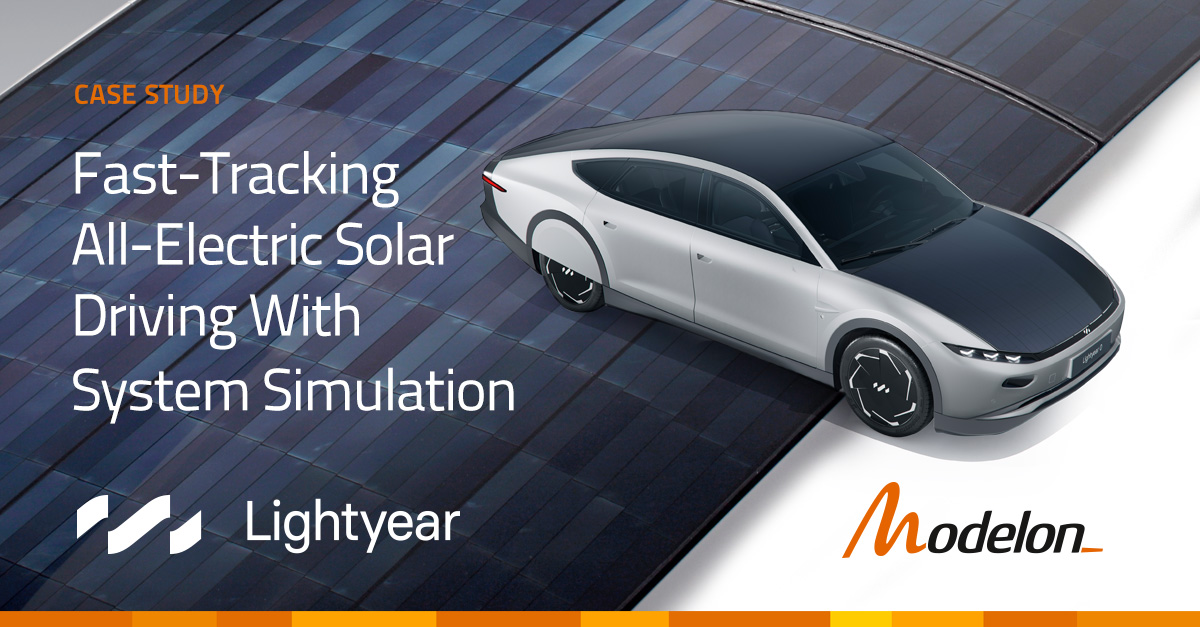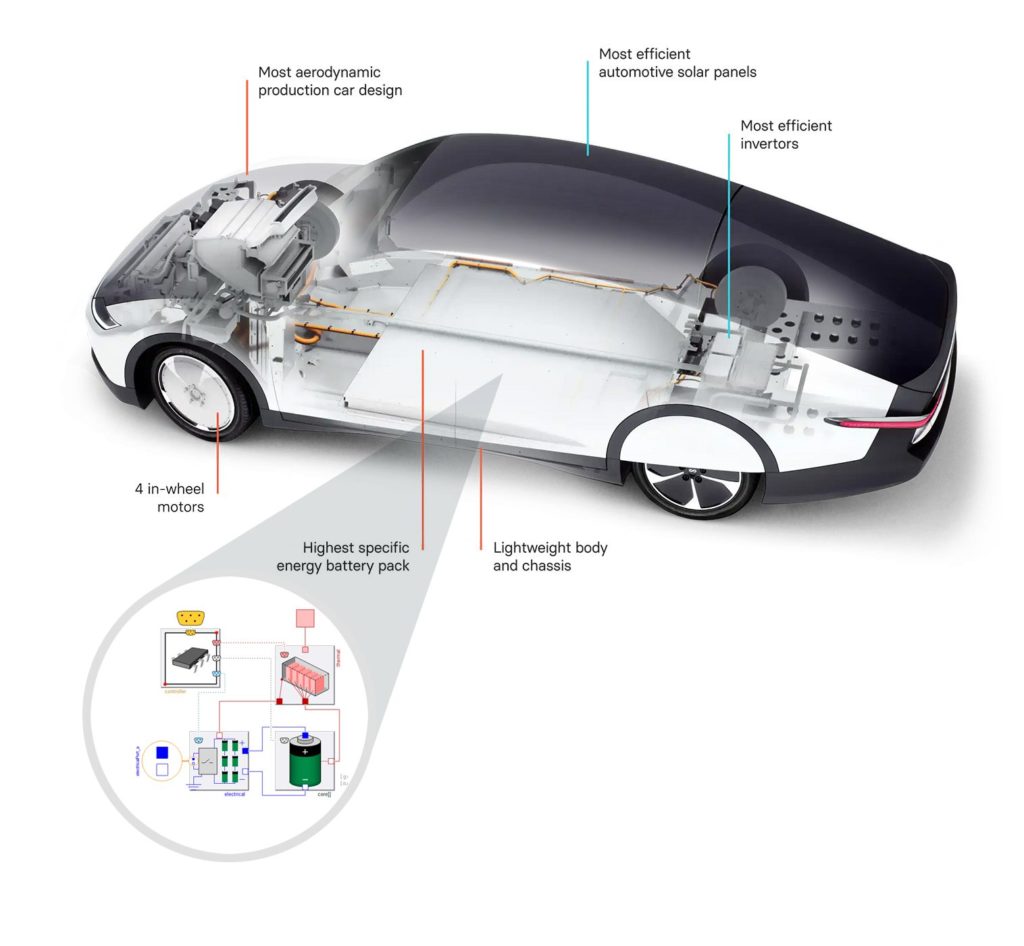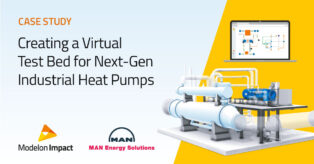Fast-Tracking All-Electric Solar Driving With System Simulation

Lightyear chooses Modelon to make quicker and smarter product development decisions for the Lightyear 0 solar vehicle.
Challenge
Lightyear’s mission is a simple but impactful one – clean mobility for everyone, everywhere. It all started when Lightyear recognized that it would be hard for automotive companies to meet the demands for sustainable technology without addressing the lack of charging infrastructure and energy grids. To make mobility more efficient, sustainable, and accessible to everyone, the innovators at Lightyear came up with the Lightyear 0 – an all solar-electric vehicle that consumes two to three times less energy than current electric vehicle technology while also having a battery range of 725 kilometers (about 450.49 mi) per charge.

Lightyear was starting from scratch and needed to prioritize the efficiency of the Lightyear 0 above all else. This meant choosing lightweight components and making smarter system design decisions such as selecting system architectures that would help achieve the overall product goals.
How would Lightyear design systems for a new vehicle with high-performance expectations, lightweight materials, and optimal efficiency in the most cost and time-effective way? They turned to Modelon’s simulation technology for answers.
Solution
Lightyear decided that, instead of designing a big battery with an extensive range, they would design a smaller battery that would be lighter and require less power to operate. Whereas many companies treat system engineering and system simulation as separate arms of the engineering process, Sapfo Tsoutsou, Thermal Engineer at Lightyear, met this challenge with a more collaborative approach. “I don’t think system simulation and system engineering are two different paths. They complement each other, actually. As minimum stakeholder requirements are presented or changed, it’s powerful to be able to test these requirements on basic architecture models created by system engineers. For example, if we wanted to see the range of a battery that’s 20% less in weight, simulation helps us save time and make decisions earlier in the process rather than later.”
The Thermal Team used Modelon Impact and the Modelica-based thermal and hydraulic component libraries included within the platform to optimize the thermal management system that conditions the battery and powertrain of the Lightyear 0. The architecture they had for the first prototype of Lightyear 0 had three pumps in the coolant system of their battery and drivetrain. When the components, such as the motors and inverters, started changing, Lightyear wondered if they could improve the controls by going from three pumps to two. They used Modelon Impact to optimize and simulate their two-pump design, proving that they could indeed simplify their system architecture – saving packaging and weight in the battery of their prototype vehicle.

Results
Modelon Impact is now an integral part of the engineering design process at Lightyear. A major result for the Thermal Team has been the amount of time they save when designing systems. For example, they could now design a small hydraulic system in 1.5 hours in comparison to the 30 hours it would take them with their previous system simulation platforms.

A major enabler for the Thermal Team to save time was the fact that Modelon Impact contains validated physical models – a key reason for Lightyear to select Modelon over other simulation platforms on the market. Sapfo and her team were able to make custom tweaks to validated models to quickly understand if an architecture would work for them before they invested too much time. “What separates Modelon Impact’s validated models from the other providers is that they are physical system models. The other platforms we evaluated did not offer ready-to-go content that specialized in physical systems. Even more, we know that Modelon Impact’s models are validated on a commercial scale which helps yield results that we can trust.”
Additionally, they didn’t need deep Modelica knowledge to simulate their systems. While Lightyear had a single person on their team that was familiar with Modelica, much of the Thermal Team was able to leverage Modelon Impact.
“Modelon’s support is incredible. If we ever have an issue, we know we can contact the Modelon team, and they will get back to us within the same day. And just like that, our issues will be gone.”
– Sapfo Tsoutsou, Thermal Engineer at Lightyear
Ultimately, by being able to model, test, and simulate their prototype designs for Lightyear 0, Lightyear was able to save money with physical prototyping, satisfy performance requirements, and meet the go-to-market timeline for Lightyear 0. Lightyear’s simulation journey continues with Modelon as they
refine their overall thermal management system.
In 2022, Lightyear is set to produce and deliver the first Lightyear 0 within Europe. With a limited series of 946 units, the Lightyear 0 has been designed to prove the feasibility of all-electric solar driving technology and pave the way for the Lightyear Two: Lightyear’s follow-up mass-market model that will be available in Europe, Asia, and the USA by 2025.


